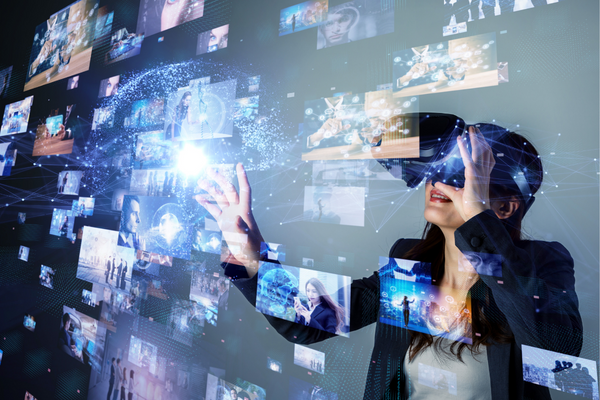“Revolutionizing the World: The Advancements of Augmented Reality and Virtual Reality” – By Bhanuka – eLanka

Augmented Reality (AR) and Virtual Reality (VR) are the latest technological advancements that are changing the way we interact with the digital world. These technologies have the potential to revolutionize the way we work, learn, play, and communicate. In this article, we’ll explore what AR and VR are, how they differ, and their various applications and impact on various industries.
What is Augmented Reality? Augmented Reality (AR) is a technology that enhances our real-world environment with digital information. AR adds digital elements, such as images, videos, and sounds, to the real world through a device such as a smartphone or tablet. The most well-known example of AR is the popular game Pokémon Go, which uses the camera of a smartphone to project digital creatures into the real world.
What is Virtual Reality? Virtual Reality (VR), on the other hand, is a completely immersive experience that replaces the real world with a simulated environment. VR is achieved through a headset that covers the user’s eyes and ears, blocking out the real world and replacing it with a digital one. VR can be used for a variety of purposes, from gaming to medical treatment to education.
Difference between AR and VR The main difference between AR and VR is that AR adds digital elements to the real world, while VR replaces the real world with a simulated environment. AR is often referred to as a “see-through” technology because it enhances our view of the real world with digital information, while VR is a “closed-off” experience that replaces the real world entirely.
Applications of AR and VR AR and VR have numerous applications across various industries, including education, entertainment, healthcare, retail, and more.
Education: AR and VR can be used in education to create interactive and engaging learning experiences. For example, students can explore historical sites or learn about scientific concepts in a virtual environment.
Entertainment: AR and VR are also being used in the entertainment industry, with VR gaming becoming increasingly popular. In VR gaming, players can enter a fully-realized virtual world and interact with other players and objects in a way that is not possible in traditional gaming.
Healthcare: AR and VR are also being used in healthcare to improve patient outcomes. For example, VR can be used to help patients overcome phobias or treat post-traumatic stress disorder (PTSD), while AR can be used to help doctors visualize complex medical procedures.
Retail: AR and VR are also being used in retail to create new and innovative shopping experiences. For example, retailers can use AR to allow customers to try on clothes virtually, or use VR to create virtual storefronts.
Impact of AR and VR The impact of AR and VR is far-reaching, and these technologies have the potential to change the way we live and work. AR and VR can increase productivity, improve education, enhance the entertainment industry, and improve healthcare outcomes.
In conclusion, AR and VR are exciting new technologies that are changing the way we interact with the digital world. Whether it’s through education, entertainment, healthcare, or retail, these technologies have the potential to revolutionize the way we live and work. As these technologies continue to advance, the impact they will have on society will only become more pronounced, and we can expect to see even more innovative and exciting applications in the future.







